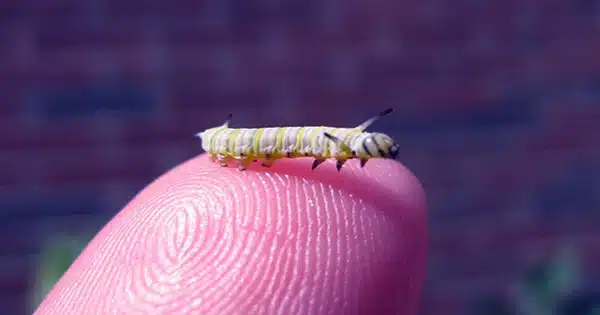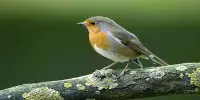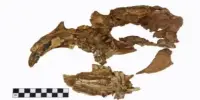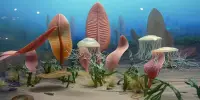Earlier this month, research was published in the journal Science Advances detailing how caterpillars got their “chubby legs,” a description that seemed quite judgy at first. The sole objective of a caterpillar is to consume as much food as possible as quickly as possible in order to grow as large as possible. Of course, the numerous legs growing from its plump body will be chubby as well! However, when I read more about the research, I became aware of an important distinction. The pudgy, stump-like legs that a caterpillar uses to inch along leaves and stems are not legs at all. They are false legs, often known as “prolegs”—stubby nubs of flesh that allow the caterpillar to move.
The caterpillar’s true legs, which will eventually evolve into its adult legs as a moth or butterfly, aren’t even utilized for walking. The three pairs of legs, known as the thoracic legs, are all grouped together near the caterpillar’s face. In fact, even if all six of a caterpillar’s “real” legs are removed or paralyzed, it can still move around with ease, prompting the perennial philosophical question: Should a leg be defined by anatomy or function? Is a prosthetic limb capable of walking, lifting, and gripping any less “real” than “true” legs that can’t do any of those things? What is the definition of realness for a leg?
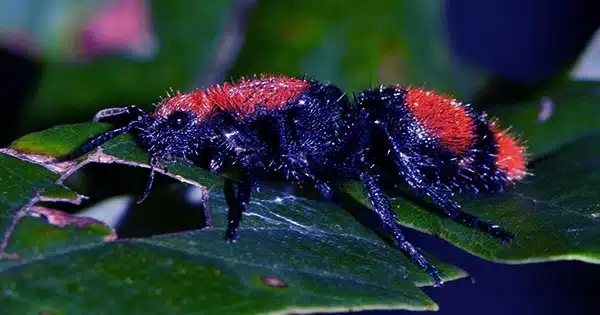
If you were previously aware of the big caterpillar leg scam, I commend your foresight and intelligence. In retrospect, I shouldn’t have been so startled. Adult insects typically have three pairs of legs, therefore it would appear weird for a young insect to have 20 or more legs and then shed the majority of them as they grow. And the caterpillar on the cover of Eric Carle’s seminal text, The Very Hungry Caterpillar, which introduced many of us to this larva, is scientifically accurate in that it has six legs (two are located at the back of the caterpillar’s body, which is less accurate; these are called anal prolegs and are also fraudulent).
In the broader scheme of arthropods, a phylum called for their jointed legs, this leg-based revelation is likewise unsurprising. If there’s one thing I can count on from an arthropod, it’ll be an unexpected evolutionary repurposing of a limb. Water boatmen transformed their legs into paddles; dung beetles transformed their legs into scythes and spurs to slice dung into balls and roll the balls back home; house centipedes’ venom-injecting fangs are actually highly modified legs and their back legs are long enough to rival their actual antennae. But the caterpillars’ leg scheme, which represents not the alteration of an anatomical leg but the evolution of a fleshy appendage that looks like a leg, walks like a leg, and could easily pass for an average, everyday leg in polite society, surprised me.
So, where does a caterpillar obtain its phony legs? (I’m not going to use “proleg” because it sounds too similar to “prolapse.”) Scientists were confused whether the imitation legs were simply another type of modified genuine limb, modified lobes of real legs, or something totally new. According to the new report, synthetic legs are unrelated to actual legs. Instead, some of the genes expressed in the caterpillar’s pudgy false legs were in charge of crustacean legs.
Caterpillars, unlike us bony humans, cannot move their artificial legs independently to march forward. Instead, they employ their phantom legs as anchors, clinging to whatever surface they’re creeping along. To move ahead, the caterpillars detach their false legs from back to front and hold them aloft while contracting their muscles, lurching forward, and then lowering their fake legs to anchor them once again. Every caterpillar’s artificial leg has a small barbed pad called a crochet that works like velcro to attach the crochets to a leaf, a twig, or whatever other substrate a caterpillar chooses to walk on. When you’ve got sticky stubs, who needs feet?
Perhaps, at least genetically, realness is unimportant to legs of this type. Philosophically, legs do not have to be permanent. Take a peek at frogs! Some appendages are ephemeral, appearing in flashes of youth to assist hungry caterpillars in finding their next meal. So, the next time you see a caterpillar, rejoice in the notion that you are witnessing the most transitory of legs, stubby stompers that will soon exist only in the realm of memory, so cherish them while you can.
